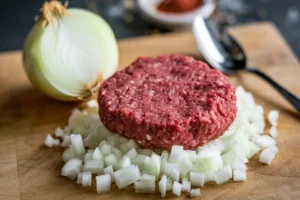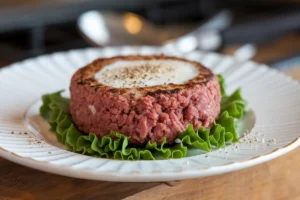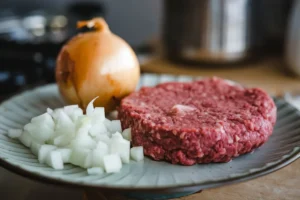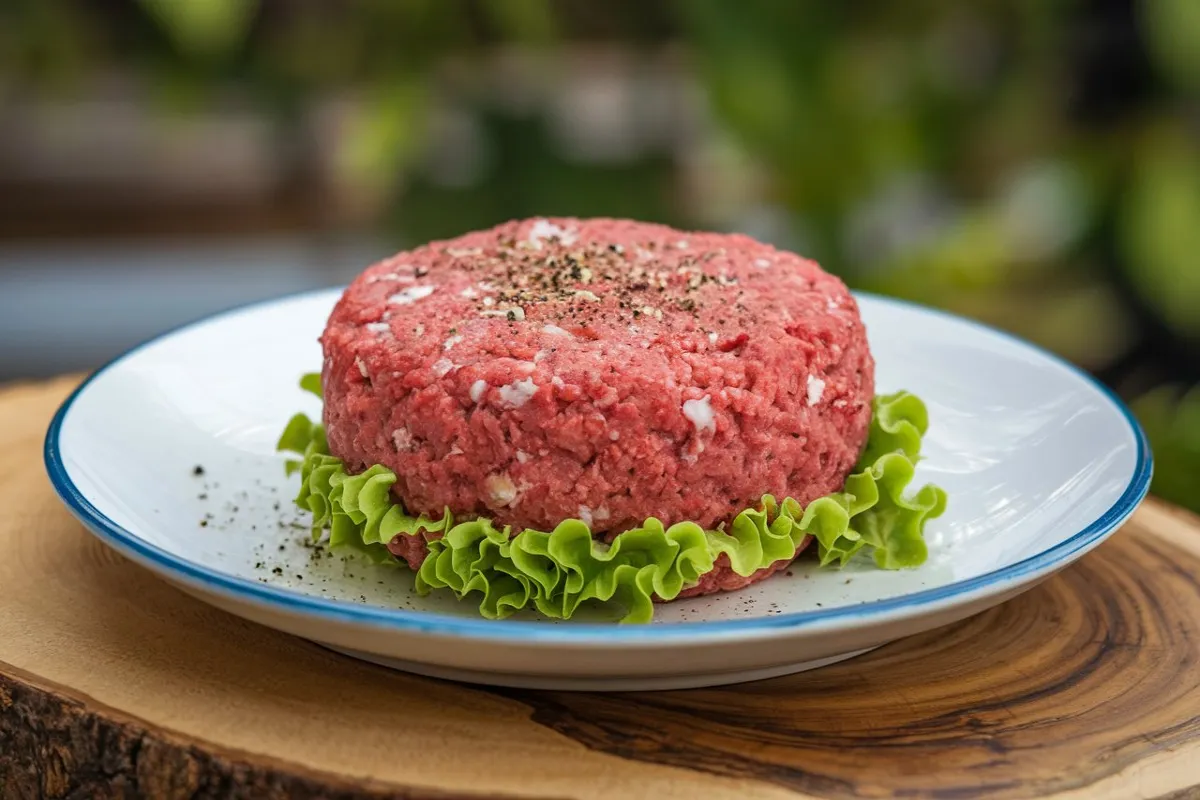When it comes to cooking ground beef, many culinary secrets can make a significant difference in the texture, flavor, and overall quality of the dish. One such secret is the somewhat surprising technique of adding milk to ground beef. This method is not only popular among home cooks but also widely endorsed by chefs and culinary experts. In this comprehensive guide, we will dive deep into the reasons for this practice, the science behind it, and how you can use it to elevate your ground beef recipes.
Why Add Milk to Ground Beef?
Adding milk to ground beef may seem unconventional, but there are several compelling reasons why it’s a technique worth trying:
- Tenderizing the meat: Milk acts as a natural tenderizer due to its enzymes and acids, which break down the muscle fibers in the meat.
- Moisture retention: The addition of milk helps keep the meat moist by creating a creamy texture that locks in the natural juices.
- Flavor enhancement: Milk adds a mild, creamy flavor that enhances the overall taste of the beef without overpowering it.
For instance, using evaporated milk in hamburgers is a popular method to create juicier, more flavorful burgers. As explained by Allrecipes, the milk’s proteins interact with the meat, helping to retain moisture and improve the texture.
Moreover, creating a panade—a mixture of bread soaked in milk—can make your ground beef dishes even more tender and moist. This technique, recommended by Jessica Gavin, is particularly effective in recipes like meatballs and meatloaf, where retaining moisture is crucial for a soft, juicy result.
The Science Behind Milk Tenderizing Meat

The secret to why milk tenderizes meat lies in its enzymatic properties. Milk contains lactic acid, a mild acid that gently breaks down the muscle fibers in meat. This process, similar to marinating meat in acidic ingredients like vinegar or lemon juice, softens the beef without making it tough or chewy.
Additionally, the proteins in milk, such as casein, bind to the muscle fibers in the beef. This binding helps to create a protective barrier that retains moisture, ensuring that the meat does not dry out during cooking. By using this method, you can achieve a more tender, juicy texture, especially in ground beef dishes that require longer cooking times.
Creating a Panade: The Secret to Juicy Ground Beef
A panade is a classic culinary technique that involves soaking bread in milk to create a paste-like consistency. When this mixture is combined with ground beef, it helps to retain moisture and tenderness, making the meat softer and more succulent.
How does a panade work?
- The bread absorbs the milk, creating a paste that distributes evenly throughout the meat.
- This mixture helps to retain moisture during cooking, preventing the beef from becoming dry or crumbly.
- It also adds a subtle flavor that enhances the overall taste of the dish.
Recipes that commonly use a panade include:
- Meatballs: The milk-soaked bread keeps them soft and tender.
- Meatloaf: Prevents it from becoming too dense or dry.
- Hamburgers: Adds juiciness and flavor, making each bite delicious.
Nutritional Impact of Adding Milk to Ground Beef
Adding milk to ground beef not only improves its texture and flavor but also has some nutritional implications:
- Increased calcium and protein: Milk naturally adds extra calcium and protein to the dish, which can be beneficial for those looking to boost their intake of these nutrients.
- Calories: The type of milk used will affect the caloric content. Whole milk will add more calories than skim or low-fat alternatives.
While these changes are generally minor, they can still have an impact depending on your dietary needs and preferences.
Practical Tips for Adding Milk to Ground Beef
To get the most out of adding milk to ground beef, consider the following practical tips:
- Type of milk: Whole milk is the most effective for tenderizing due to its fat content, but evaporated milk or non-dairy alternatives like almond or soy milk can also work well.
- Soaking time: Allow the ground beef to soak in milk for about 15-30 minutes. This timeframe is sufficient for tenderizing without making the meat too soft.
- Proportions: For a pound of ground beef, use approximately ¼ to ½ cup of milk. Adjust the amount based on the recipe and desired tenderness.
Common Mistakes to Avoid When Using Milk with Ground Beef

When incorporating milk with ground beef, be mindful of these common pitfalls:
- Over-soaking or under-soaking: Finding the right balance is key. Over-soaking can result in a mushy texture, while under-soaking won’t effectively tenderize the meat.
- Using the wrong type of milk: Full-fat milk or alternatives with sufficient fat content will yield the best results. Avoid using skim milk or other low-fat varieties that may not provide enough moisture or flavor.
- Not accounting for added moisture: Since milk adds extra liquid to the meat, you may need to adjust other liquids in the recipe accordingly to maintain the right consistency.
Alternatives to Milk for Tenderizing Ground Beef
If you are lactose intolerant or prefer not to use milk, there are several alternatives that can also help tenderize ground beef:
- Dairy options: Cream, yogurt, or buttermilk can provide similar effects to milk, thanks to their fat content and mild acidity.
- Non-dairy alternatives: Almond milk, soy milk, and coconut milk can work as substitutes. They offer a similar texture, though they may slightly alter the flavor profile.
- Other tenderizing methods: Ingredients like bread crumbs, eggs, or even a small amount of baking soda can help achieve a tender, moist texture in ground beef.
Health Considerations and Dietary Restrictions
While using milk in ground beef offers many benefits, there are health considerations and dietary restrictions to keep in mind:
- Lactose intolerance: Individuals with lactose intolerance can opt for non-dairy milk alternatives, such as almond or soy milk, which provide similar benefits without causing digestive issues.
- Caloric impact: The type of milk used (whole, skim, or non-dairy) can affect the overall calorie count of your dish. Choose the variety that aligns best with your dietary goals.
- Low-carb or keto diets: For those following a low-carb or keto diet, heavy cream can be an excellent substitute for milk, adding richness and creaminess without extra carbohydrates.
Expert Opinions: What Chefs and Nutritionists Say
Culinary experts and nutritionists often endorse the use of milk in ground beef dishes for its unique tenderizing properties. Chefs recommend this technique in dishes such as meatballs and Bolognese sauce, where achieving the perfect texture is essential. Nutritionists also point out the additional benefits of incorporating milk, such as increased calcium and protein, which can make it a valuable addition to many diets.
Additional Tips for Incorporating Milk in Ground Beef Recipes
Here are a few more practical tips to help you make the most of adding milk to ground beef:
- Choose the right recipes: This technique works best in dishes where tenderness and moisture are crucial, such as meatballs, meatloaf, hamburgers, and even some sauces like Bolognese.
- Experiment with different types of milk: While whole milk is ideal for its fat content, don’t hesitate to try alternatives like evaporated milk or non-dairy options to suit different tastes and dietary needs.
- Adjust seasoning accordingly: Milk can soften flavors slightly, so be sure to taste and adjust your seasoning after adding milk to your mixture. A bit more salt or spice may be needed to balance the creaminess.
Real-Life Examples: Recipes That Use Milk in Ground Beef

1. Classic Meatballs
Combine ground beef with a panade (bread soaked in milk), minced garlic, onions, parsley, an egg, salt, and pepper. Roll into balls and bake or fry until golden brown. The result is a soft, flavorful meatball that’s perfect for pasta dishes or sandwiches.
2. Juicy Hamburgers
Mix ground beef with a few tablespoons of milk, some Worcestershire sauce, salt, and pepper. Form patties and grill to your desired level of doneness. The milk keeps the burgers juicy, even if they’re cooked to well-done.
3. Traditional Meatloaf
Prepare a panade using breadcrumbs and milk, then mix it with ground beef, chopped vegetables, an egg, and your favorite seasonings. Bake in a loaf pan until fully cooked. The milk ensures a moist texture throughout, preventing the meatloaf from drying out.
Why Milk Is Such an Important Ingredient for Meat Dishes
Milk’s unique combination of fat, enzymes, and moisture makes it an excellent addition to ground beef dishes. By using milk, you can:
- Enhance the natural flavors of the meat.
- Maintain the right level of moisture, even in recipes that require extended cooking times.
- Ensure a tender, juicy texture that is often hard to achieve with ground beef alone.
The Verdict: Is Adding Milk to Ground Beef a Game-Changer?
Based on both culinary practice and expert advice, adding milk to ground beef is a worthwhile technique that can elevate your cooking. Whether you’re a seasoned chef or a home cook, this method offers a simple, cost-effective way to achieve better texture, flavor, and moisture in your ground beef dishes.
By integrating these tips into your cooking routine, you can enjoy the benefits of a tender, flavorful, and juicy dish every time. So go ahead, experiment with adding milk to ground beef, and experience the delicious difference it makes!

